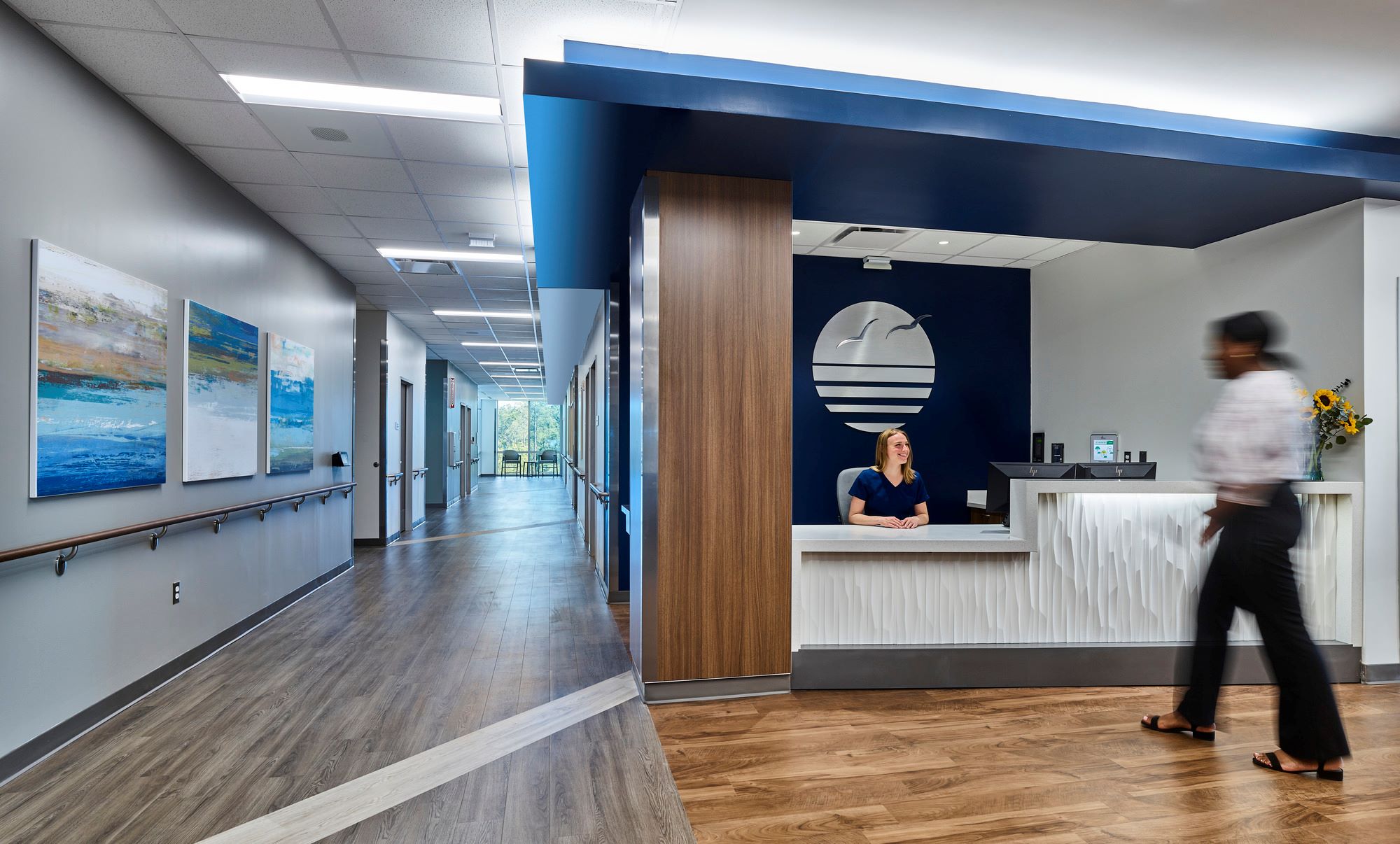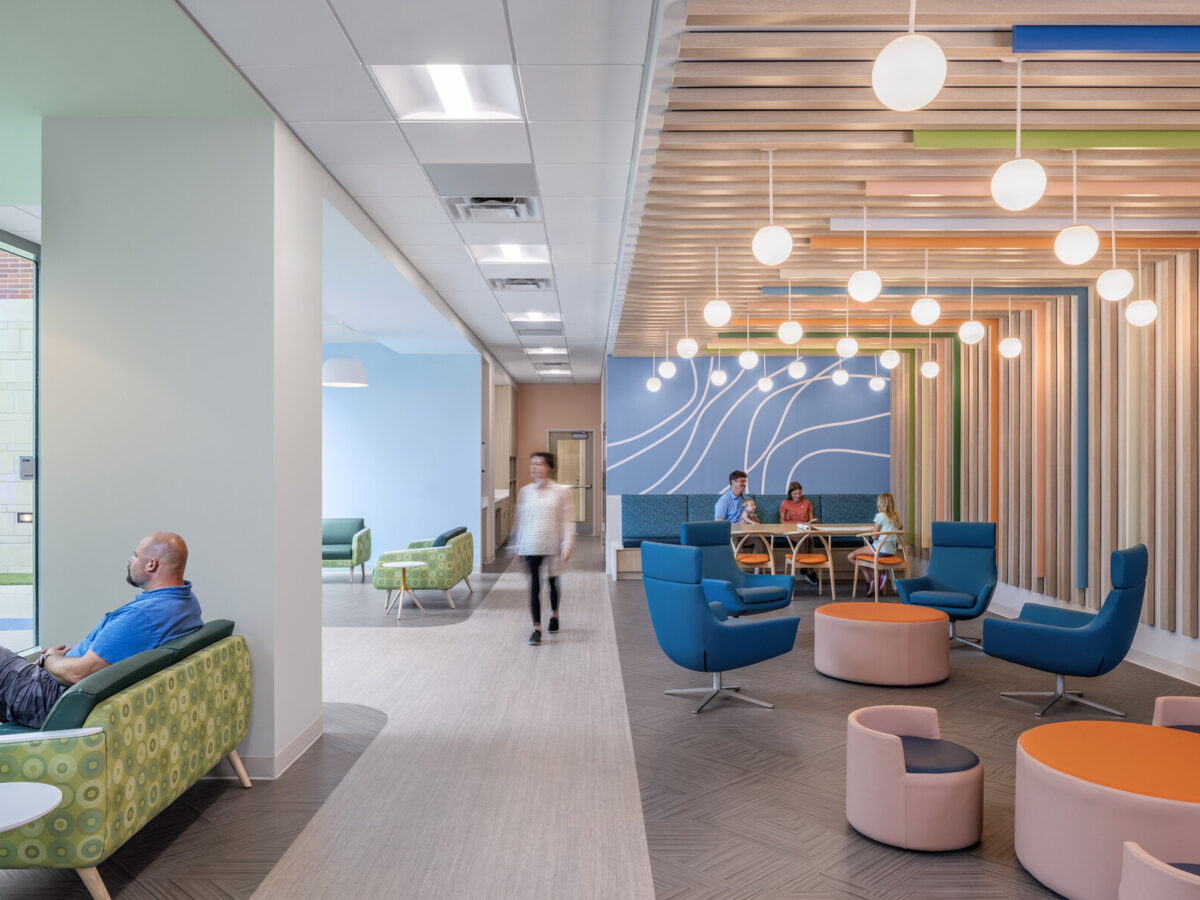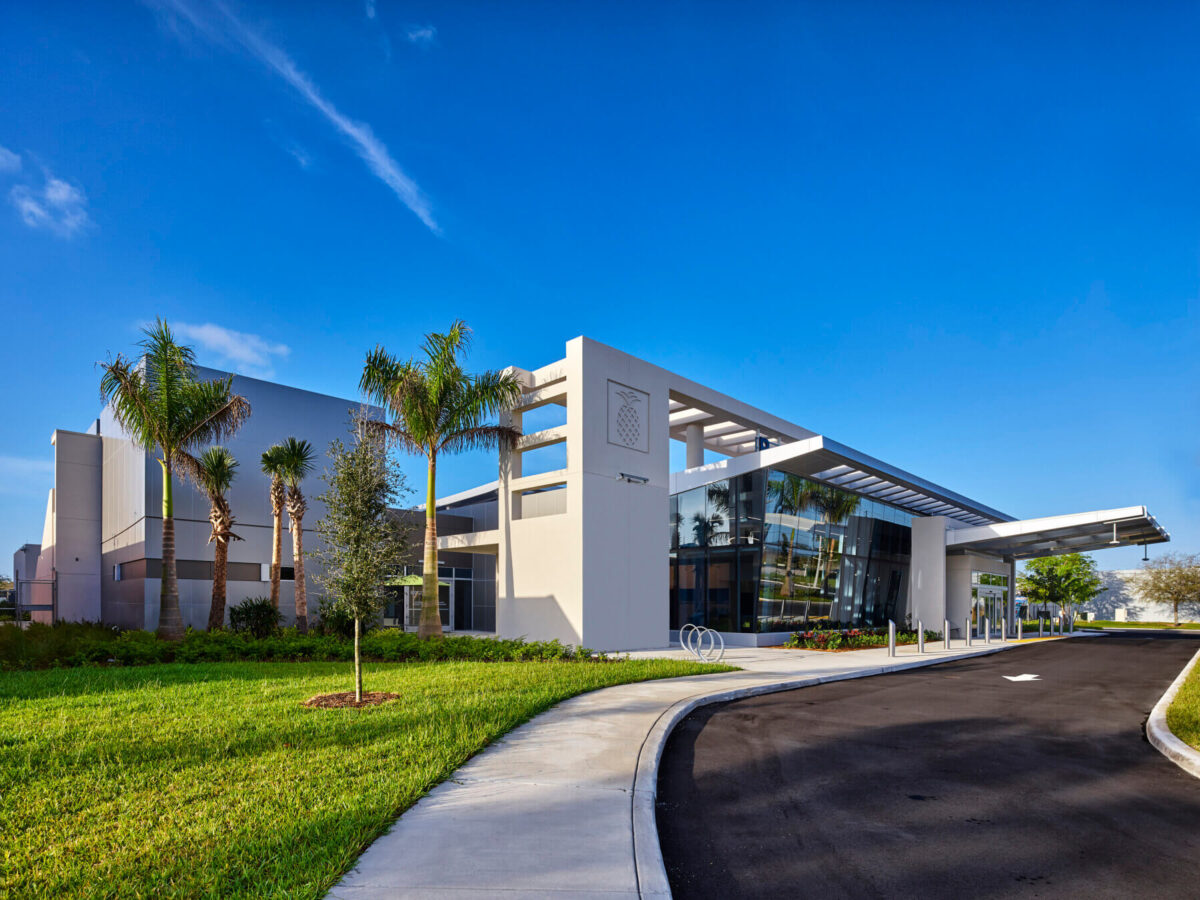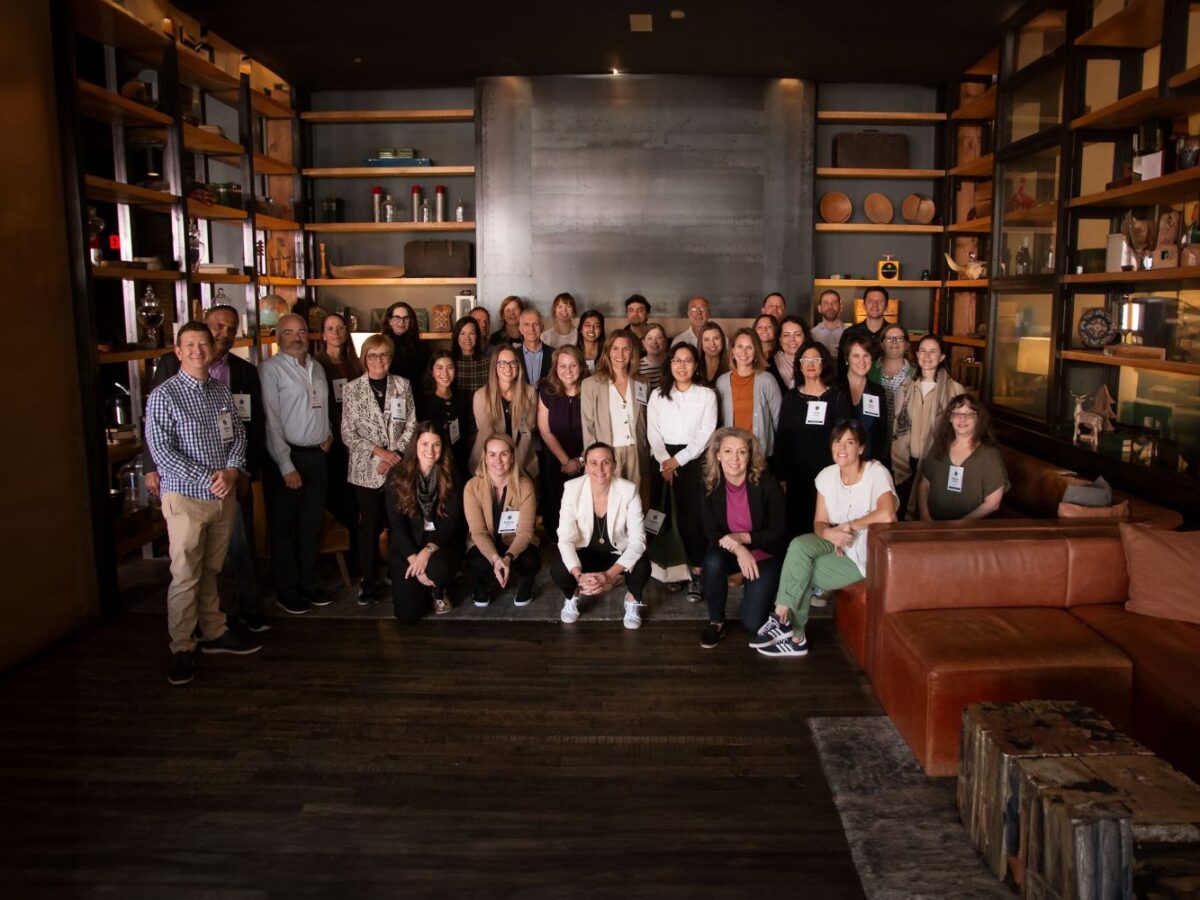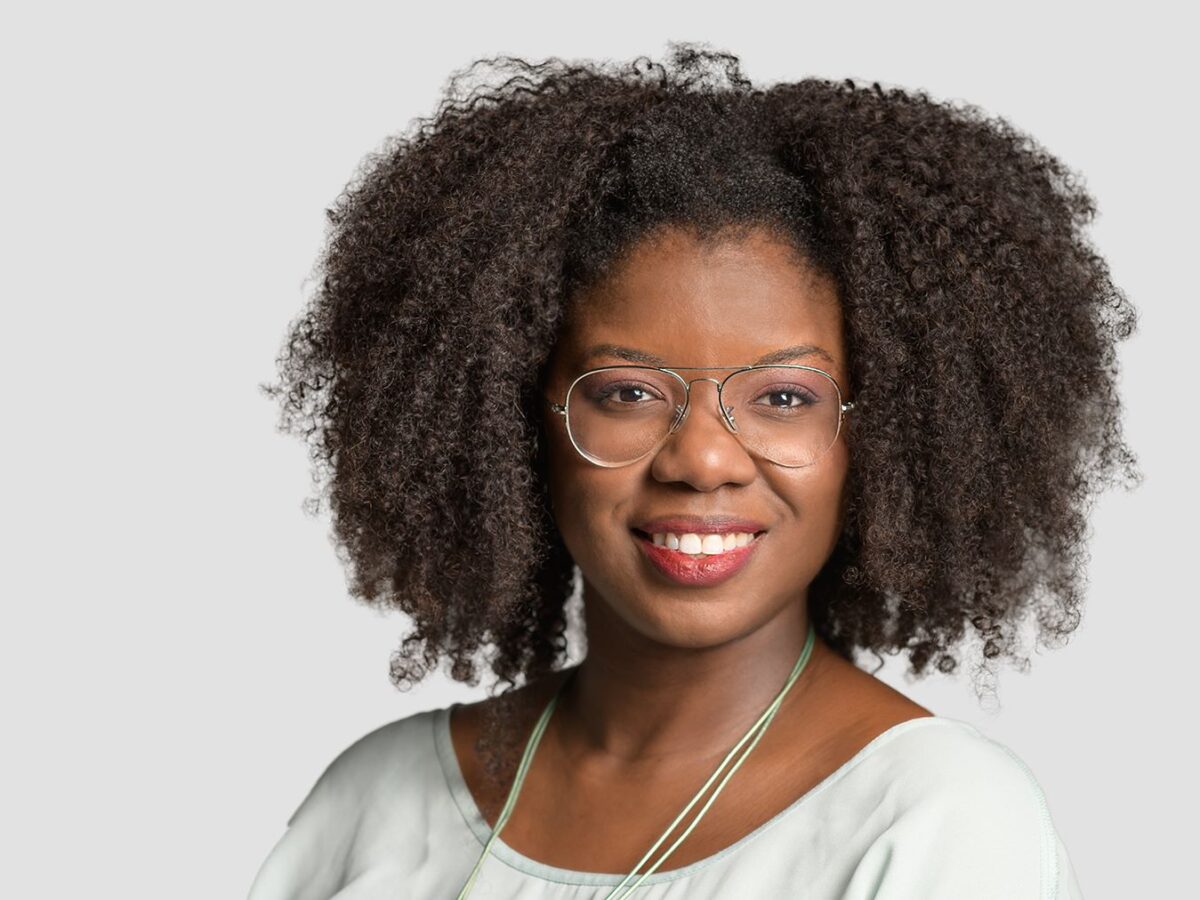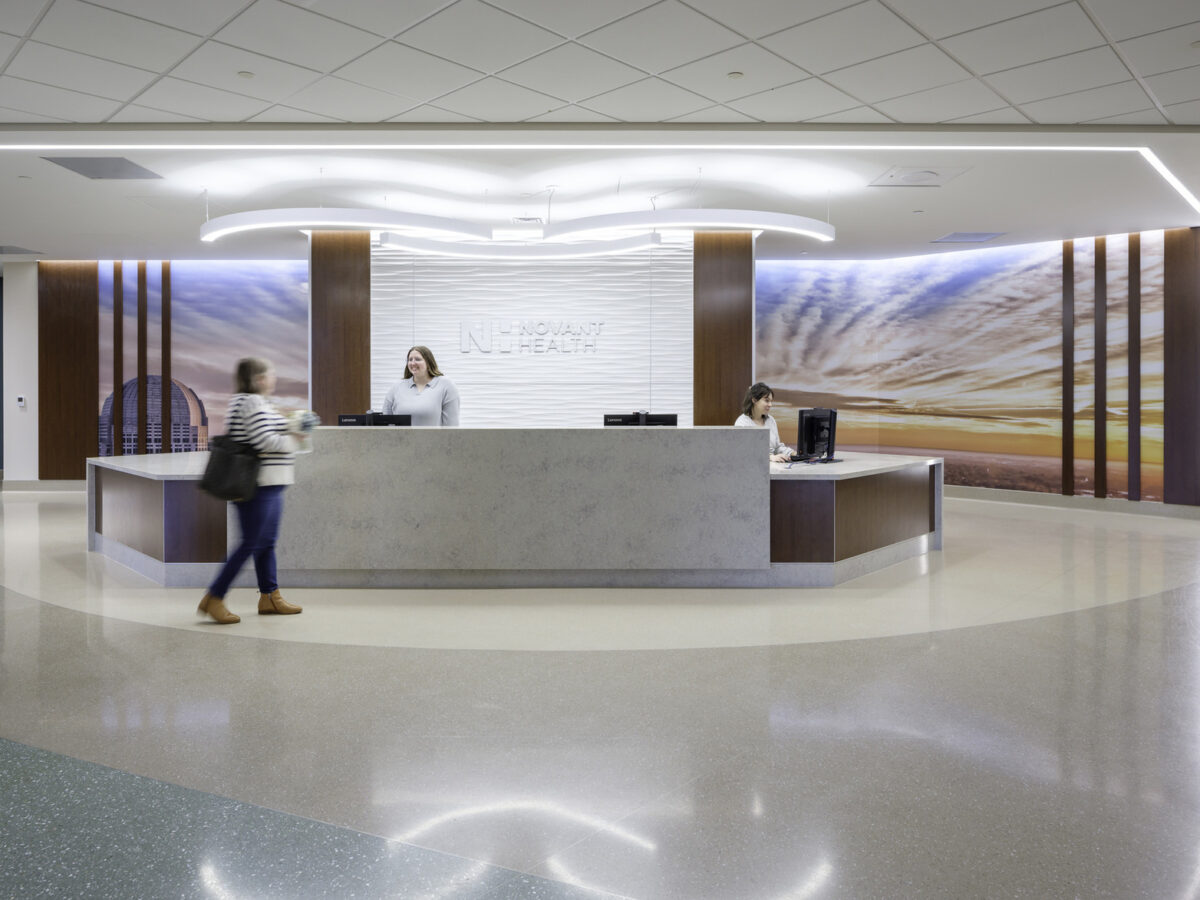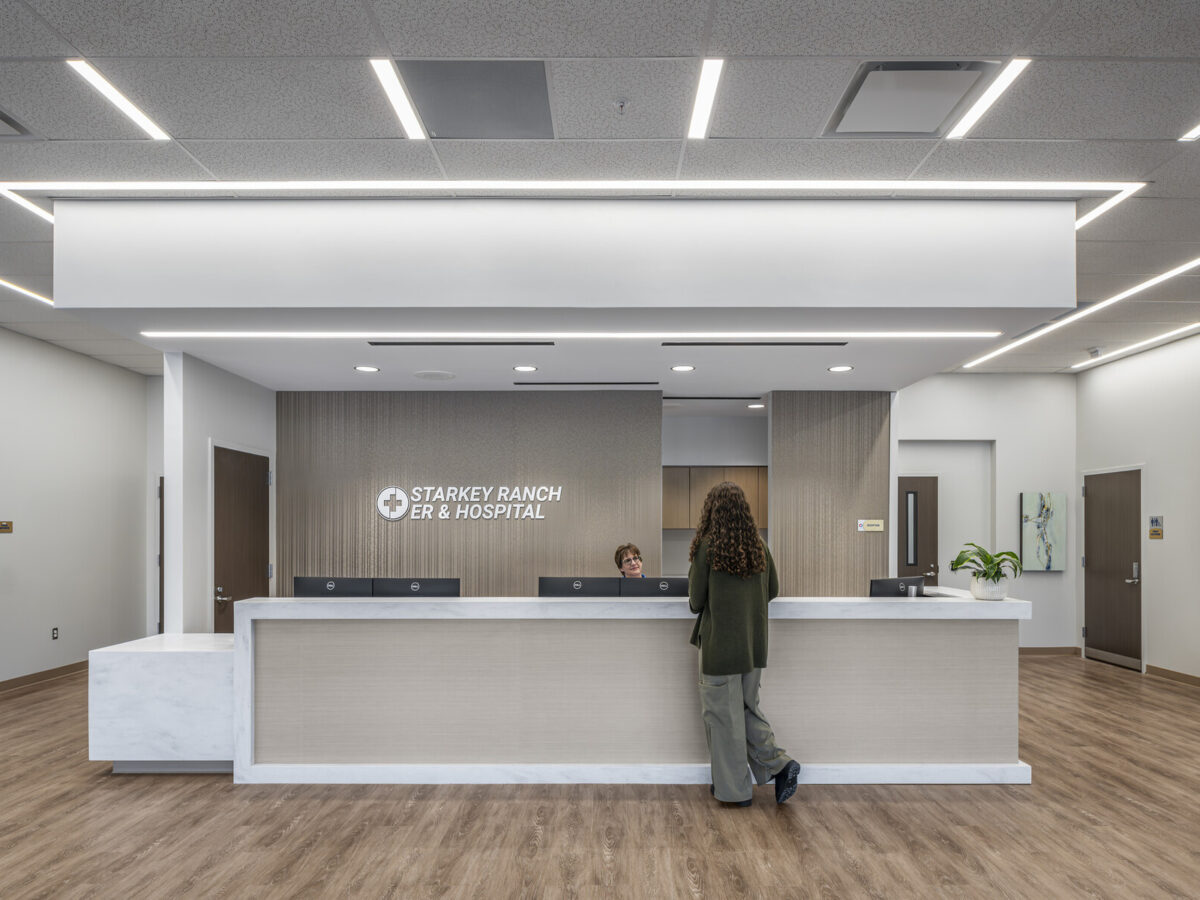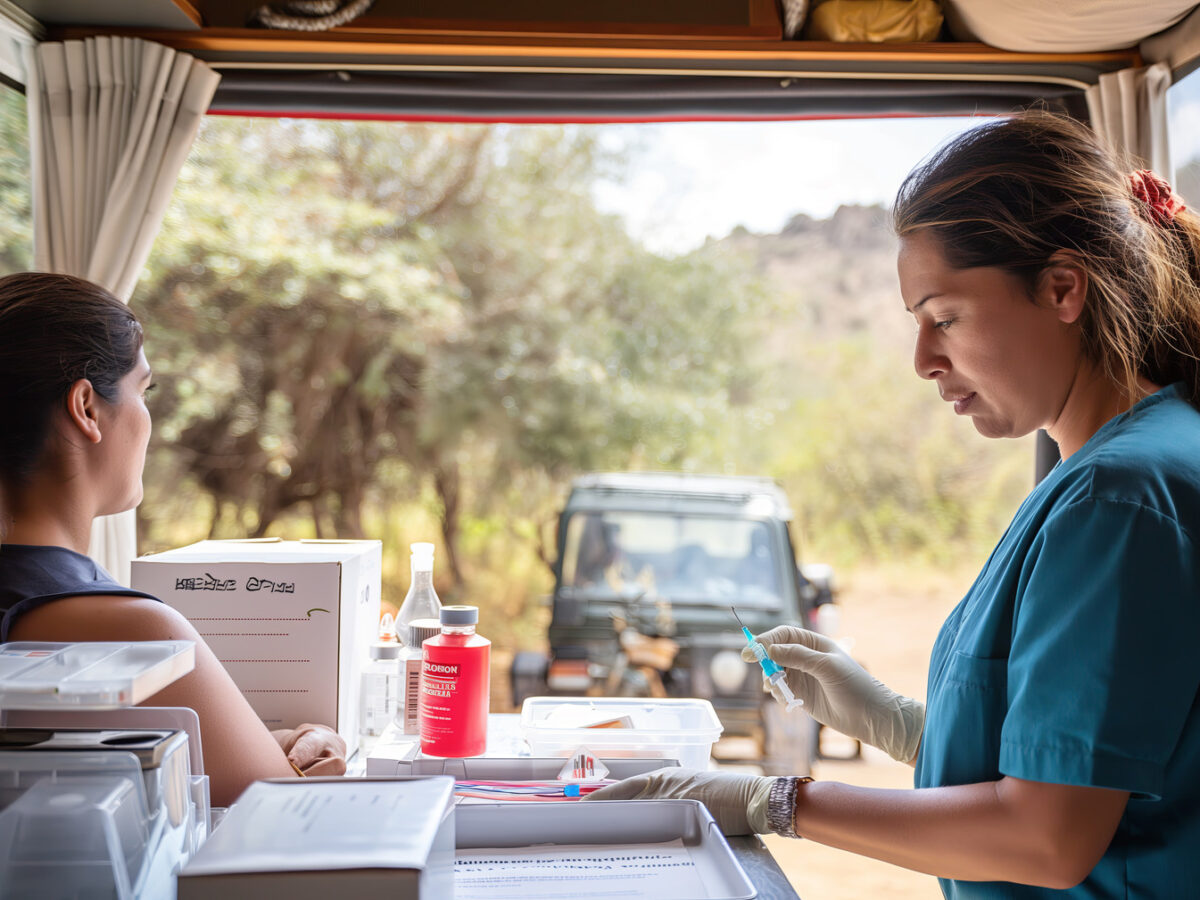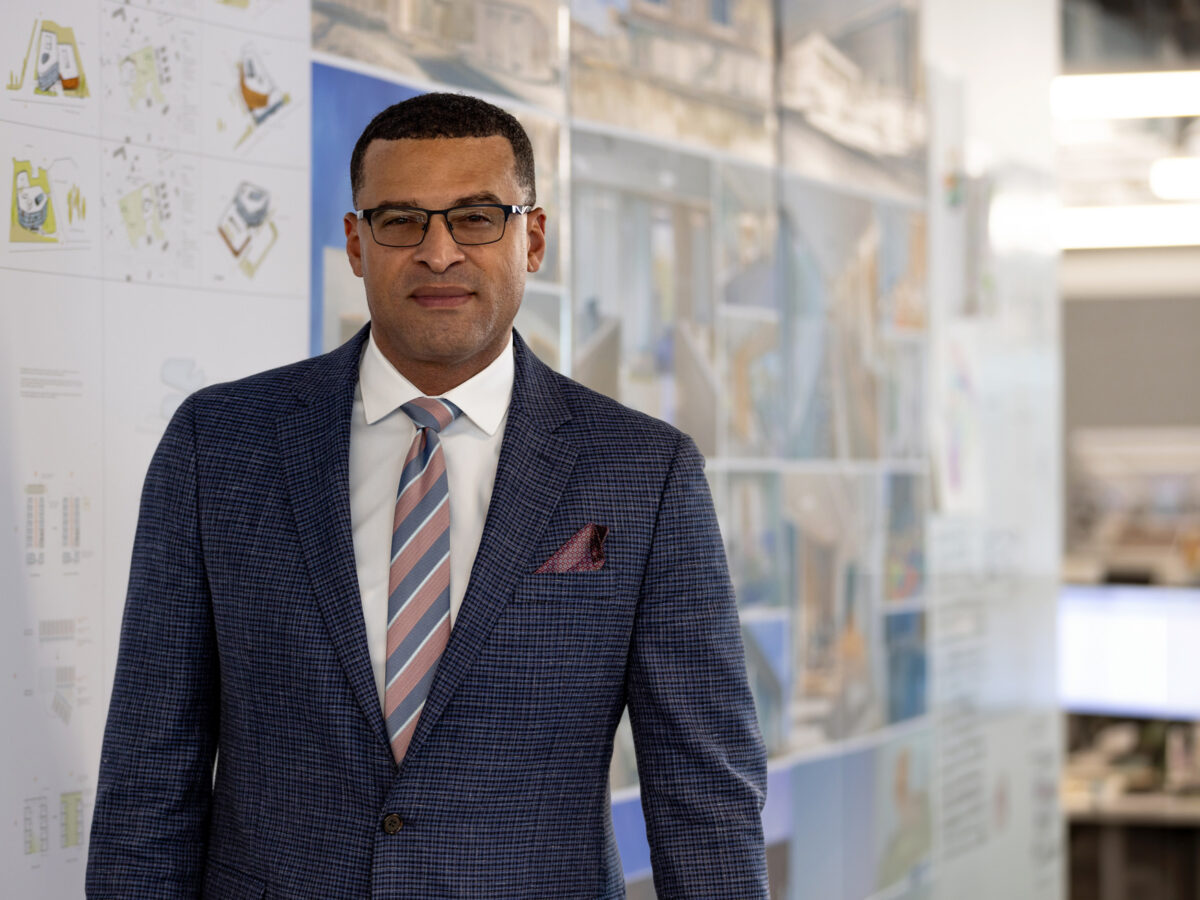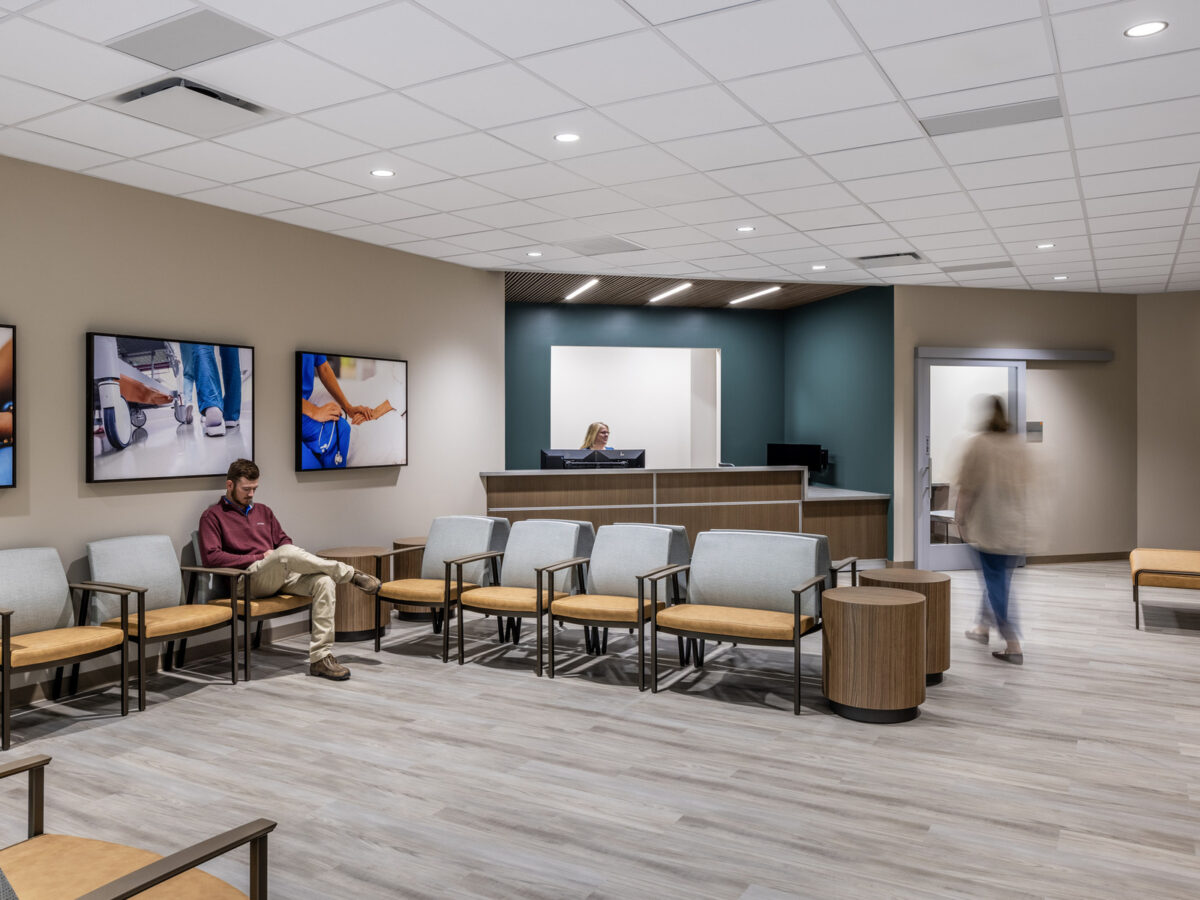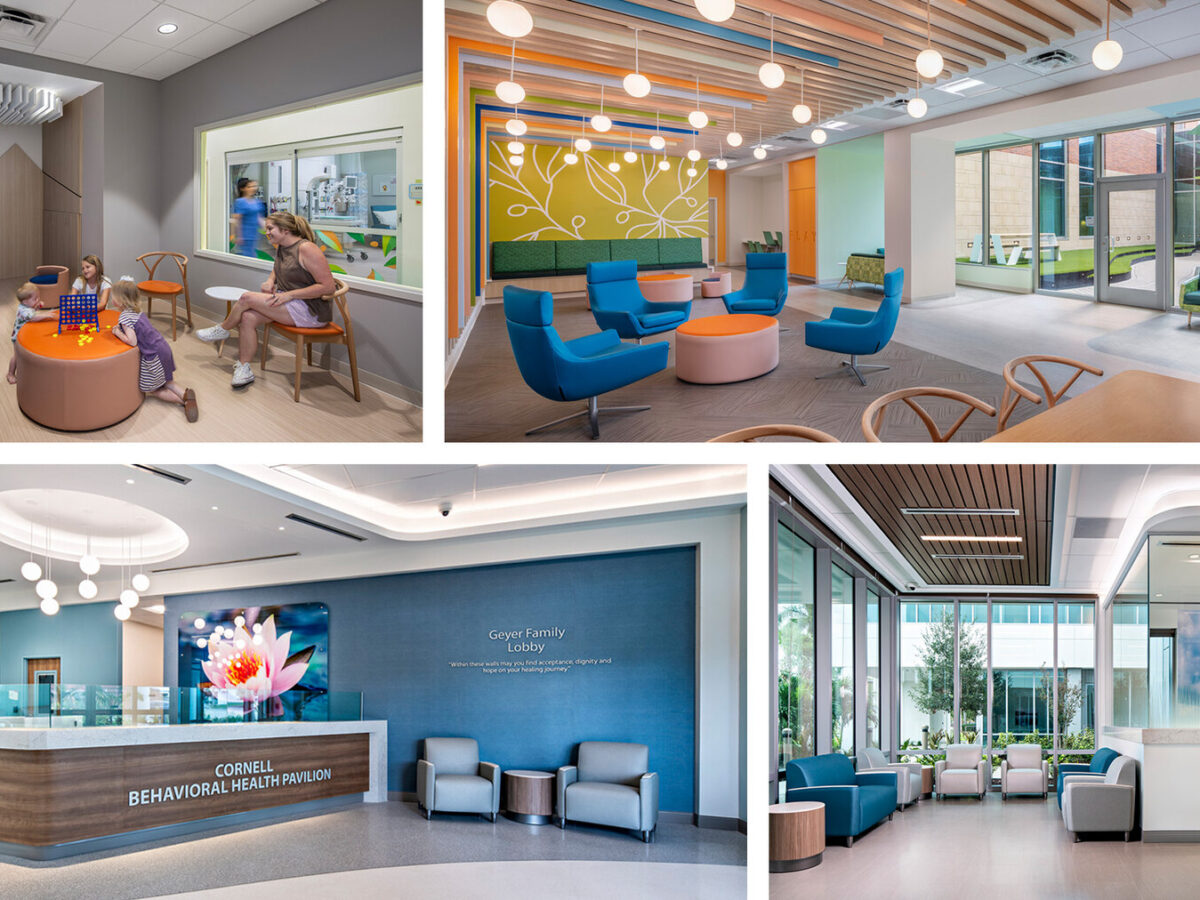In April, Brooks Rehabilitation opened its most recent Inpatient Rehabilitation Facility, a 76,000-square-foot hospital designed to care for high-acuity patients. Located at their new Bartram campus in Jacksonville, Florida, the facility specializes in caring for those who have experienced a stroke, non-traumatic spinal cord injury, brain injury, or a severe orthopedic condition.
With an average patient stay of 23 days, the inpatient rehabilitation facility serves as a true “home away from home” as patients progress along their healing journey. And while it includes the latest technology and equipment to offer advanced treatment strategies, the hospital also has an intuitive interior design that aids in the recovery process.
Using distinct colors in various spaces, the carefully selected color palettes help to promote feelings of movement and energy where appropriate, or calm and peacefulness when it is time for rest. Learn more about how this intentionally-designed space is helping patients on their road to recovery.
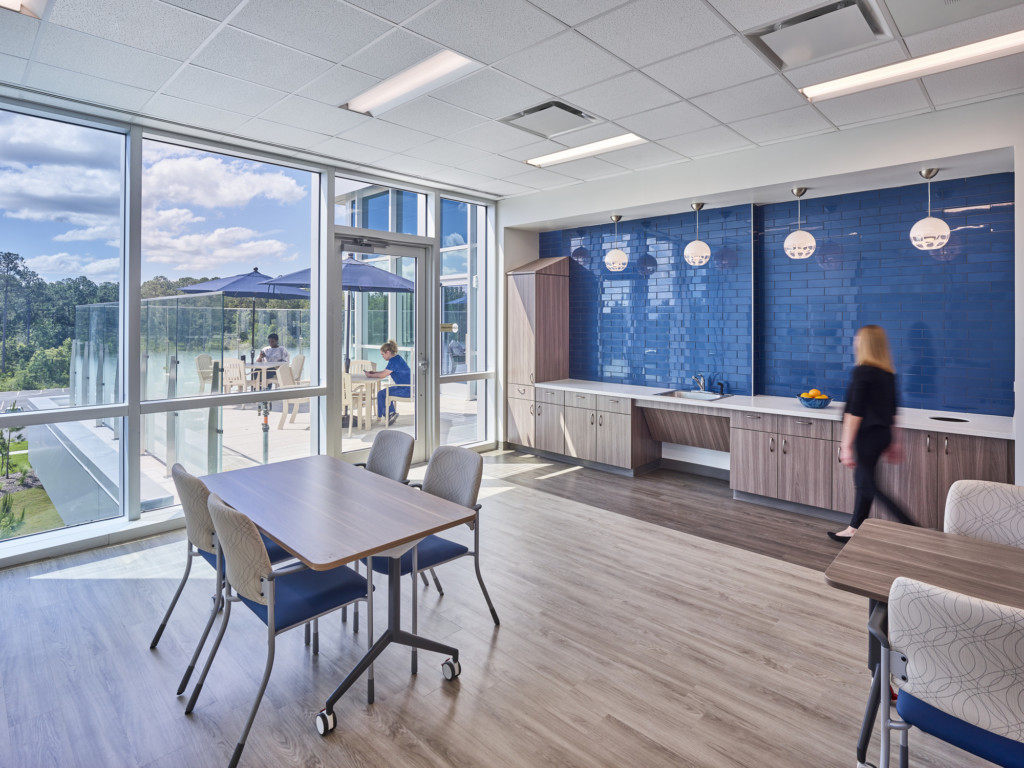
Respecting the Rigorous Recovery Process
For Inpatient Rehabilitation Facility patients, it is a necessity to push their body beyond the injury. The recovery process often includes relearning everyday actions, social skills, how to deal with a slightly chaotic environment and more. This also means that the day of a patient is split into two distinct phases – one for active therapy and one for recovery – and that rest is just as important as activity.
As interior designers, our color palettes selections can help define a space and support its’ intended purpose. In this hospital, vibrant and stimulating color schemes were used in the active therapy spaces, while neutral color palettes and natural imagery were used in the patient rooms.
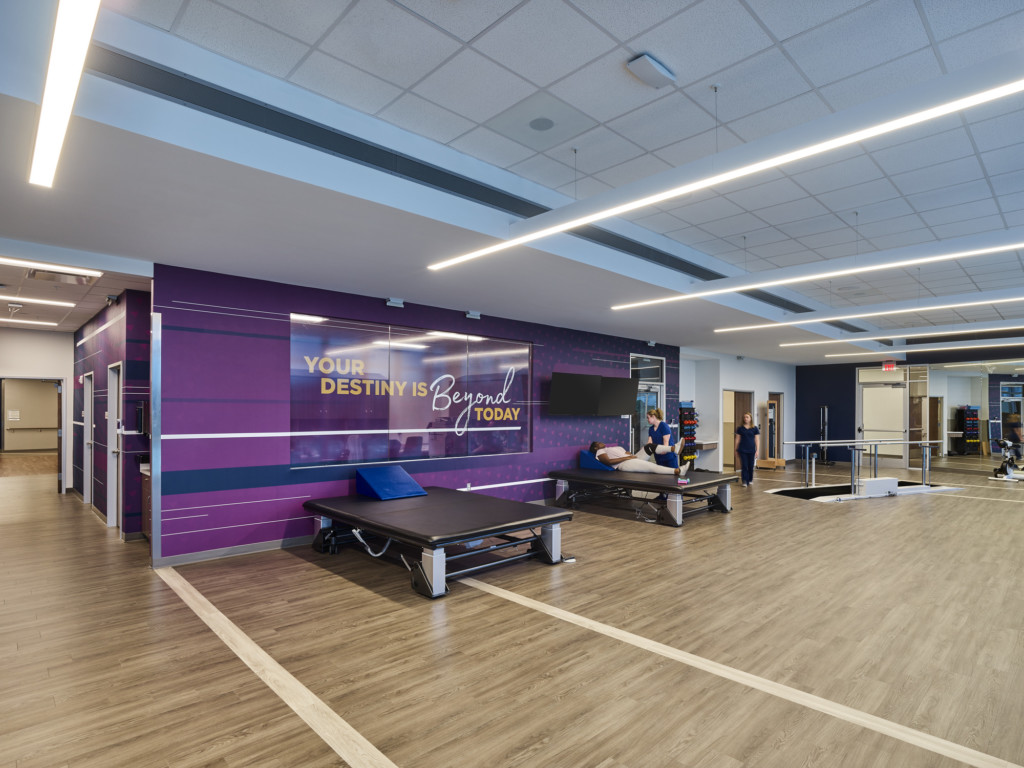
A Vibrant Palette Supports Activity
The moment a patient walks through the front doors of the hospital, they are greeted by an intense bright blue color that is central to the Brooks Rehabilitation brand. This continues to the upper patient floors, acting as a stimulating element that promotes a standard of energy and a sense of place.
As one of the foremost active spaces in the hospital, the gym can be mentally challenging for patients, as they have to push their bodies to achieve their physical therapy requirements. To reinforce the notion of movement and encourage patients, the bright blue is complemented by shades of purple, with a design that intersperses blocks of color on the solid walls. Going even further, the floor pattern colors are designed with distance markers that drive patients to achieve that next step.
Presenting an opportunity to interact with other patients and relearn social skills, the day space requires more mental than physical effort from patients, but needs the same level of dedication to recovery. Using more vibrant blue tones, as well as a bright green geometric pattern on the furniture, the room’s interior design preserves the same feeling of energy and creates an active space.
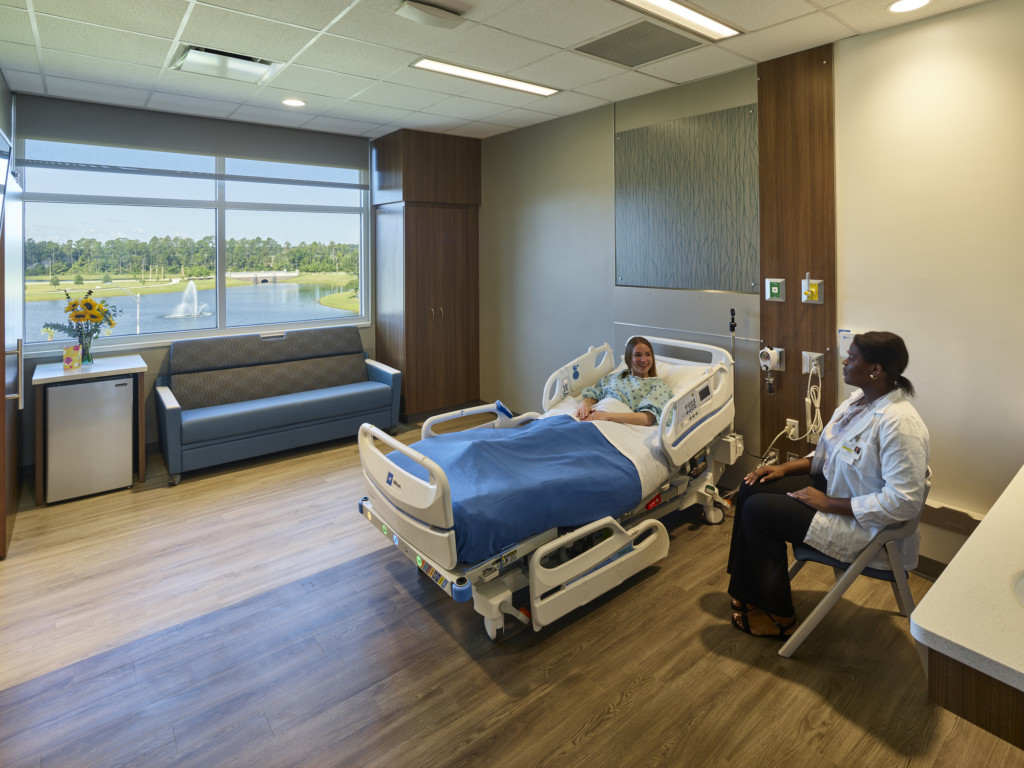
Time for Rest and Recovery
The patient rooms are located through a set of double doors, signaling the transition to a distinctly different part of the hospital that is meant for rest and recovery. To encourage feelings of calm and quiet, our interior design shifts from vibrant colors towards a more neutral palette.
With inspiration from William Bartram, a naturalist who explored the north Florida region, the patient rooms include abstract imagery of native sawgrass on the headwall coupled with simple grey and wood tones on both the walls and floor, the patient rooms present a place of relaxation. Wall color and flooring pattern changes also identify the patient and family zone from the staff zone.
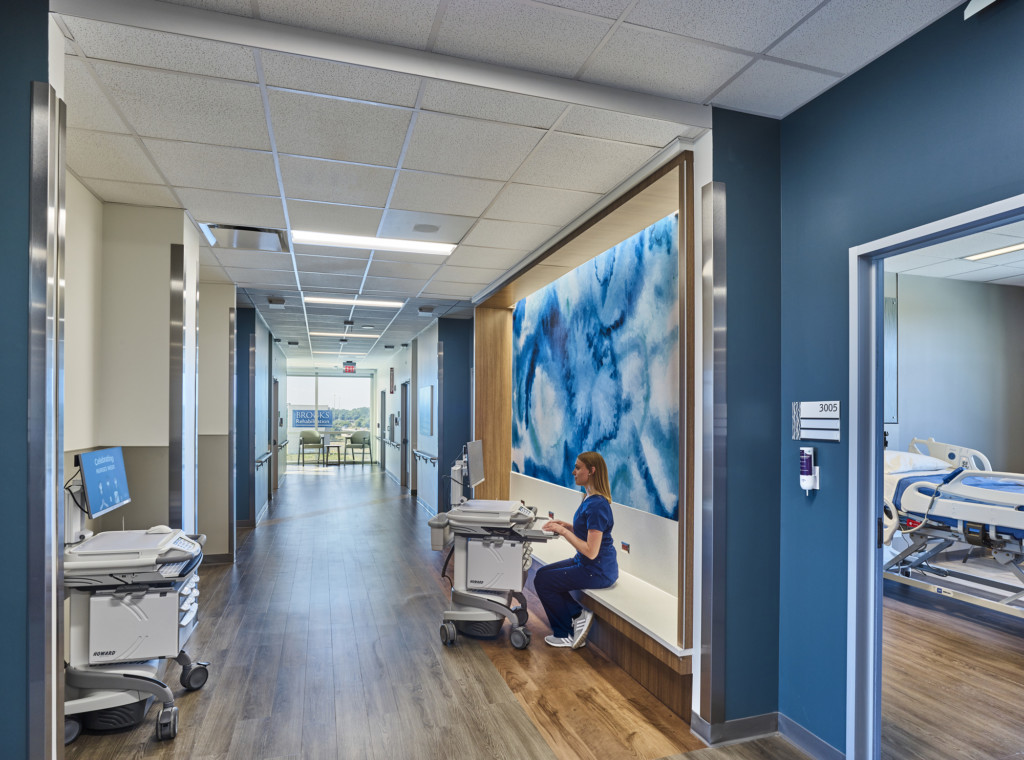
Transition Spaces are Important, Too
The design team used softer tones in the corridors to signal the transition from active therapy to rest and recovery, and vice versa. Solid, mild blue walls, alternated with large supergraphics, show patients they are entering quieter spaces. Additionally, a wood floor runs parallel to the main patient circulation, which gives directional cues.
With its’ doors already open to patients, Brooks Rehabilitation’s latest hospital is already helping patients regain the independence to live their lives. Capitalizing on the natural environment and using color theory to support caregivers in their mission, the facility’s interior design will benefit patients for years to come.
